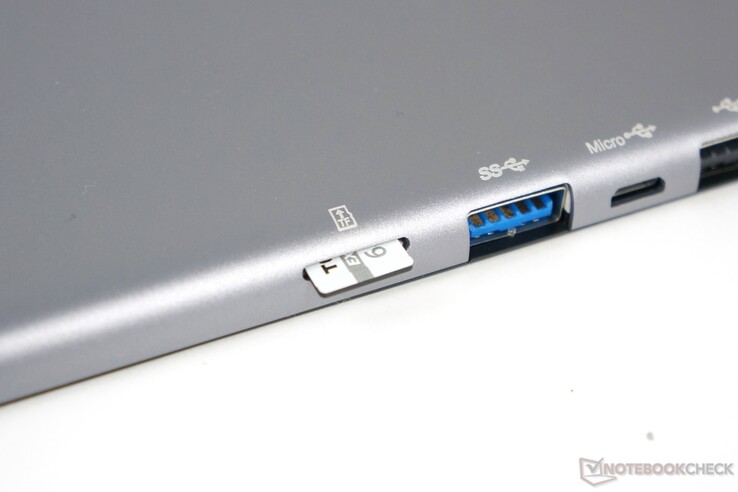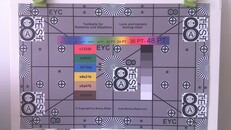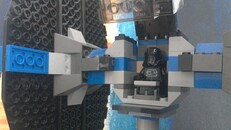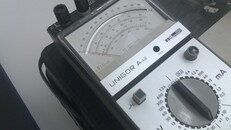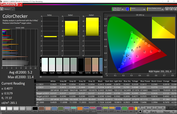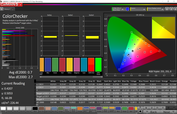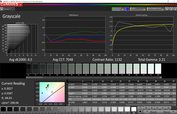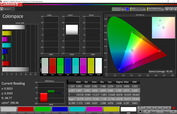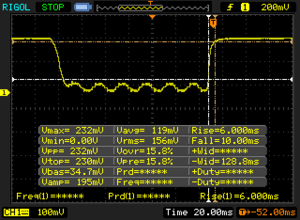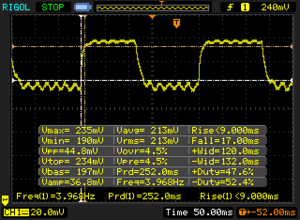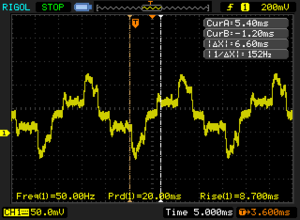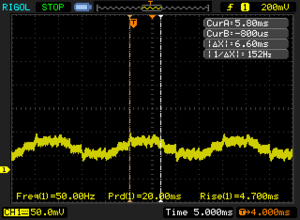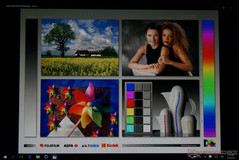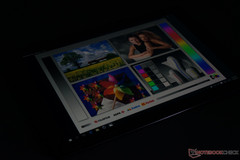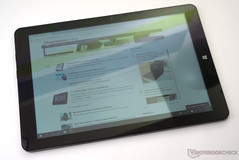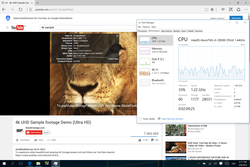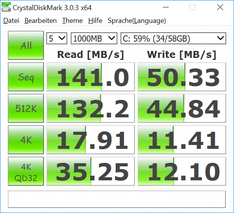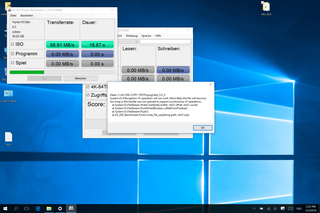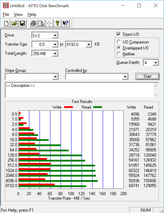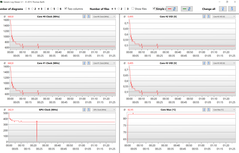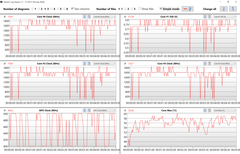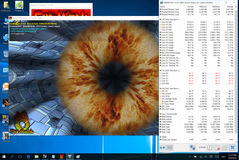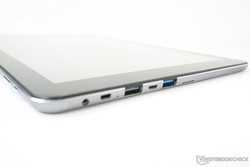Chuwi Hi12 Tablet Review

For the original German review, see here.
After looking at the small 8-inch tablet by Chuwi called Vi8 Plus, we now dedicate ourselves to the more expensive 12-inch tablet based on a similar hardware configuration. Like the smaller Windows device, the Chuwi Hi12 seems to be made by Hampoo. At least the motherboard is identified as Hampoo Cherry Trail CR (e.g. in HWInfo 32), but Hampoo's website does not list a 12-inch tablet with Cherry Trail. Therefore, it might be a made-to-order production for Chuwi.
The Hi12 will only be available with Windows 10 at first. A dual-boot version with both Android and Windows are to follow at a later date. A keyboard dock is also planned; corresponding ports are already present on the underside. However, Chuwi is likely waiting to see how successful its tablet will be before delivering the keyboard for making the Hi12 a convertible.
Case & Connectivity
Despite its low price, the aluminum casing of Chuwi's Hi12 convinces with high-quality feel and looks. However, it is also quite susceptible to scratches. The design reminds us of the first iPad with a plastic frame around the display. The stability ranges from good to very good, and it only produces quiet cracking noises under higher pressure. Like the mentioned 1st generation iPad, there is no gap between the glass and the display, which slightly affects the looks.
The interface diversity is quite impressive for a low-cost tablet: Three USB ports, one of which is a micro-USB that also recharges the device, are not standard in this category. By comparison, the Surface Pro 4 only sports one USB 3.0 port. Our review sample's micro-HDMI jack unfortunately malfunctioned, and it would be graded slightly lower than the frequently incorporated DisplayPort in premium devices even when functioning (keyword, e.g. 4K support). However, the installed Atom processor is also limiting here.
Communication
Chuwi relies on a Realtek RTL8723BS 802.11n (2.4 GHz only) chip as the Wi-Fi card. It reached a maximum of 5 MB per second in conjunction with a Linksys E4200 router in the test. An old MacBook Pro 13 (2007) achieved the best rate at 10 MB/s in the 2.4 GHz network in a direct comparison. Overall, the Hi12 is situated in the good midfield, and the connection never broke off in the test.
Connecting a wireless keyboard or mouse via Bluetooth (max. 4.0 supported) functioned impeccably and without interference in the test.
Accessories
Only a USB-to-micro-USB charger with 5 volts and 2.5 amperes is included. We recommend using it with caution: The similar power adapter included for Chuwi's Vi8 Plus (see test) broke down when we disconnected it, and there was an acute risk of electrocution.
A keyboard dock is planned for the future; a proprietary docking port for it is already found on the underside. The keyboard is not yet available, and photos have not yet been publicized, either.
Maintenance
Four Torx screws fix the casing, and Chuwi warns about loss of warranty when opening the casing. However, only battery replacement is noteworthy as a maintenance option due to the fanless design.
Warranty
GearBest includes the standard 12-month warranty for Chuwi's Hi12 (as for all products).
Cameras
Like in the small Vi8 Plus, the Hi12 does not really feature high-quality cameras. The front-facing camera is sufficient for undemanding video chats, and the rear-facing 5MP sensor is not convincing even in good light conditions. It will likely only suffice for photographing invoices or documents.
Input Devices
Keyboard
Chuwi relies on the unmodified Windows 10 on-screen keyboard. It is comfortable to use thanks to the large screen.
Touchscreen
The large touchscreen exhibited good accuracy in sketching and good response times in handling. Misinterpretations were seldom during use (they, however, might have been due to an overloaded processor). All ten fingers were also detected impeccably in the test. A dedicated pen with pressure level detection is not supported (unlike the Surface devices).
The YouTube video above shows prolonged interaction with the touchscreen as well as "finger-painting" via Paint to illustrate the accuracy and responsiveness and/or latency while using the device.
Display
The highlight of Chuwi's Hi12 is unquestionably the 12-inch screen from the Surface Pro 3 (SEC3542 panel). Its unusual 3:2 aspect ratio and resolution of 2160x1440 pixels make it perfect for tablet use. However, the unit in the Hi12 does not quite accomplish the 350 cd/m² that we measured in the Surface 3 Pro, and it unfortunately dims even further in battery mode. On the other hand, both illumination and contrast are comparable - despite the additional screen protector that the Hi12 is delivered with.
| |||||||||||||||||||||||||
Brightness Distribution: 89 %
Center on Battery: 238 cd/m²
Contrast: 1145:1 (Black: 0.256 cd/m²)
ΔE Color 5.2 | 0.5-29.43 Ø5
ΔE Greyscale 8.5 | 0.57-98 Ø5.3
95.2% sRGB (Calman 2D)
82.5% sRGB (Argyll 1.6.3 3D)
62% AdobeRGB 1998 (Argyll 1.6.3 3D)
68.1% AdobeRGB 1998 (Argyll 2.2.0 3D)
95.3% sRGB (Argyll 2.2.0 3D)
66% Display P3 (Argyll 2.2.0 3D)
Gamma: 2.21
| Response Times | |
| Response Time Grey 50% / Grey 80% (sort by value) | |
| Chuwi Hi12 (11.6, 16.4) | |
| Microsoft Surface Pro 4, Core m3 (17.2, 28.8) | |
| Chuwi Vi8 Plus (CWI519) (24, 26) | |
| Response Time Black / White (sort by value) | |
| Chuwi Hi12 (5.2, 10.8) | |
| Microsoft Surface Pro 4, Core m3 (6, 25.2) | |
| Chuwi Vi8 Plus (CWI519) (14, 10.4) | |
| PWM Frequency (sort by value) | |
| Chuwi Hi12 | |
| Apple iPad Pro 12.9 | |
| Microsoft Surface Pro 4, Core m3 (50) | |
| Chuwi Vi8 Plus (CWI519) (50, 120) | |
* ... smaller is better
Like the Surface 3 Pro, Chuwi's Hi12 also presents good color accuracy out of the box. The results are first rate post calibration, and should even satisfy demanding photographers (in the sRGB color space).
The Hi12 is not very suitable for outdoor use. The reduced brightness in battery mode and intense reflections caused by the gap between glass and display do not result in an ideal combination.
Display Response Times
| ↔ Response Time Black to White | ||
|---|---|---|
| 16 ms ... rise ↗ and fall ↘ combined | ↗ 5.2 ms rise | |
| ↘ 10.8 ms fall | ||
| The screen shows good response rates in our tests, but may be too slow for competitive gamers. In comparison, all tested devices range from 0.1 (minimum) to 240 (maximum) ms. » 32 % of all devices are better. This means that the measured response time is better than the average of all tested devices (21.5 ms). | ||
| ↔ Response Time 50% Grey to 80% Grey | ||
| 28 ms ... rise ↗ and fall ↘ combined | ↗ 11.6 ms rise | |
| ↘ 16.4 ms fall | ||
| The screen shows relatively slow response rates in our tests and may be too slow for gamers. In comparison, all tested devices range from 0.2 (minimum) to 636 (maximum) ms. » 32 % of all devices are better. This means that the measured response time is better than the average of all tested devices (33.7 ms). | ||
Screen Flickering / PWM (Pulse-Width Modulation)
| Screen flickering / PWM not detected | |||
In comparison: 53 % of all tested devices do not use PWM to dim the display. If PWM was detected, an average of 17900 (minimum: 5 - maximum: 3846000) Hz was measured. | |||
PWM is apparently not used to dim the screen. However, we could measure minor brightness fluctuations in AC mode. That might be due to lack of shielding. This assumption seems logical since the headset jack in not static-free.
Thanks to the IPS panel, the viewing angles are very good; the intense reflections are more distracting than color deviations.
Performance
Like Chuwi's little Vi8 Plus, the Hi12 is furnished with the latest Atom x5-Z8300 SoC alongside an integrated HD Graphics card. However, a highlight is the 4 GB of DDR3L RAM that are installed as the working memory. That is a bit of a surprise since Intel specifies a maximum of 2 GB for the Z8300. Only the higher priced Cherry Trail models, such as the x5-Z8500, actually support 4 GB.
Processor
Compared with the Satellite Click 10 that is also available with an x5-Z8300, Chuwi's Hi12 fares well in our processor benchmarks. The Click 10 only manages 87% of the Hi12's performance particularly in the single-core test of Cinebench R15. However, the stronger Z8500 is at least 13% faster in our tests. The Surface devices (especially the Pro) have a considerable lead thanks to their faster SoCs.
| Chuwi Hi12 HD Graphics (Cherry Trail), Z8300, Hynix HCG8E 64 GB | Chuwi Vi8 Plus (CWI519) HD Graphics (Cherry Trail), Z8300, 32 GB eMMC Flash | Microsoft Surface 3 HD Graphics (Cherry Trail), Z8700, 128 GB eMMC Flash | Microsoft Surface Pro 3 HD Graphics 4400, 4300U, Hynix HFS128G3MNM | Microsoft Surface Pro 4, Core m3 HD Graphics 515, 6Y30, Samsung MZFLV128 NVMe | Asus Transformer Book T300FA-FE001H HD Graphics 5300, 5Y10, SanDisk DF4128 | Lenovo Yoga 300-11IBR HD Graphics (Braswell), N3050, Seagate ST500LM000 Solid State Hybrid Drive | Fujitsu Stylistic Q665 HD Graphics 5300, 5Y31, Samsung SSD PM851 256 GB MZNTE256HMHP | HP Stream 11 X360 HD Graphics (Bay Trail), N2840, 32 GB eMMC Flash | |
|---|---|---|---|---|---|---|---|---|---|
| Cinebench R10 | -3% | 39% | 214% | 192% | 148% | -10% | 155% | ||
| Rendering Single 32Bit | 950 | 885 -7% | 1225 29% | 3675 287% | 3286 246% | 3102 227% | 1068 12% | 3123 229% | |
| Rendering Multiple CPUs 32Bit | 2934 | 2964 1% | 4356 48% | 7067 141% | 6994 138% | 4966 69% | 1999 -32% | 5280 80% |
System Performance
Chuwi's Hi12 has to accept some losses in system performance. The high-resolution screen takes its toll on the weak Atom processor. The Hi12 lags behind Chuwi's smaller Vi8 Plus (+35% in PCMark Home) despite 4 GB of RAM. Thus, it places itself at the lower end of older Atom Z37xx tablets, such as Lenovo's Yoga 2-1051F. The more expensive Surface Pro 4 with a Core m3 is more than twice as fast with 233%.
The fairly weak performance is seen in occasional stutters and lags during routine use. However, that is not always the case as the video embedded above illustrates well. The system does not have many reserves, and it can sometimes get slower when, for example, an update is being installed in the background.
Videos are no challenge for the hardware decoder. Even 4K YouTube videos ran smoothly without frame drops (see embedded video).
| PCMark 8 Home Score Accelerated v2 | 1039 points | |
| PCMark 8 Work Score Accelerated v2 | 1008 points | |
Help | ||
| PCMark 8 | |
| Home Score Accelerated v2 | |
| Microsoft Surface Pro 4, Core m3 | |
| Microsoft Surface 3 | |
| Chuwi Vi8 Plus (CWI519) | |
| HP Pro Tablet 10 EE G1 | |
| Chuwi Hi12 | |
| Work Score Accelerated v2 | |
| Microsoft Surface Pro 4, Core m3 | |
| Chuwi Vi8 Plus (CWI519) | |
| HP Pro Tablet 10 EE G1 | |
| Chuwi Hi12 | |
Storage Device
The integrated eMMC storage of 64 GB is relatively generous for this price range. It is touted with 150 MB/s, which it also achieved as the maximum read performance in the ATTO benchmark. A read rate of just 141 MB/s was recorded in CrystalDiskMark. The storage device is not the fastest in write. The AS SSD benchmark unfortunately reproducibly crashed like in Chuwi's Vi8 Plus.
Compared with the smaller Vi8 Plus, the Hi12 is considerably faster. However, its read and write speeds are only middling when compared with the multiple Bay Trail devices in our database.
Graphics Card
The graphics core stably clocked at only 400 MHz in a load scenario (e.g. FurMark). The TDP and temperature ceiling limits that. Chuwi's Vi8 Plus achieved roughly the same level in the 3DMark GPU benchmark tests. The Satellite Click 10 is only on par in Cloud Gate. It is approximately 15% fast in the 3DMark 11 and Firestrike tests.
Old devices with a Bay Trail Atom, such as the Z3745, only achieve 53 - 67% of the performance in the 3DMark 11 GPU test. Core M devices are much faster. The slowest model in the test (HP Spectre x2 12) accomplishes 333% of the performance with 996 points.
| 3DMark 06 Standard Score | 2595 points | |
| 3DMark 11 Performance | 344 points | |
| 3DMark Cloud Gate Standard Score | 1488 points | |
| 3DMark Fire Strike Score | 174 points | |
Help | ||
| 3DMark 11 - 1280x720 Performance GPU | |
| Microsoft Surface Pro 4, Core m3 | |
| Microsoft Surface Pro 3 | |
| Microsoft Surface 3 | |
| Chuwi Hi12 | |
| Chuwi Vi8 Plus (CWI519) | |
| HP Pro Tablet 10 EE G1 | |
| 3DMark - 1280x720 Cloud Gate Standard Graphics | |
| Microsoft Surface Pro 4, Core m3 | |
| Chuwi Hi12 | |
| Chuwi Vi8 Plus (CWI519) | |
| HP Pro Tablet 10 EE G1 | |
Gaming Performance
Chuwi's Hi12 is rather unsuitable for sophisticated 3D games due to the integrated Intel HD Graphics. Even undemanding, up-to-date games, such as "World of Warships" are not playable. Only single, older games like "World of Warcraft" or low requirement games like the preloaded "Candy Crush" could provide diversion.
| low | med. | high | ultra | |
| World of Warcraft (2005) | 50.9 | 18.3 | ||
| Diablo III (2012) | 24.3 | 16 | ||
| Dota 2 Reborn (2015) | 20 | 15.2 | 7.2 | |
| World of Warships (2015) | 13.9 | |||
| Farming Simulator 17 (2016) | 22.6 |
Load Clock Rates and Temperatures
All four cores were utilized for browsing in our test. They clocked at the maximum of 1.84 GHz. The GPU also clocked at 400 to 500 MHz in our test. The CPU clock dropped to just over 600 MHz after just a few second of maximum load because the temperature climbed to over 82 °C (179.6 °F). Even the graphics card permanently clocked at just 340 MHz. However, the tablet did not overheat or crash in these extreme load tests.
Emissions
System Noise
Chuwi's Hi12 does not produce any noise even during high load thanks to passive cooling.
Temperature
The waste heat of the Atom x5-Z8300 is discharged well thanks to the large aluminum casing. We therefore measured the same low surface temperature as on Chuwi's Vi8 Plus with the same SoC during load. They are absolutely within limits with at most 44 °C (111.2 °F) during full load.
(±) The maximum temperature on the upper side is 44 °C / 111 F, compared to the average of 33.8 °C / 93 F, ranging from 20.7 to 53.2 °C for the class Tablet.
(+) The bottom heats up to a maximum of 37 °C / 99 F, compared to the average of 33.3 °C / 92 F
(+) In idle usage, the average temperature for the upper side is 29 °C / 84 F, compared to the device average of 30 °C / 86 F.
Speakers
Two stereo speakers are situated on the edges of Chuwi's Hi12. They have a middling volume (for a tablet) of 77 dB(A), and are thus considerably louder than those in the small Vi8 Plus. However, they do not provide splendid music enjoyment in any way.
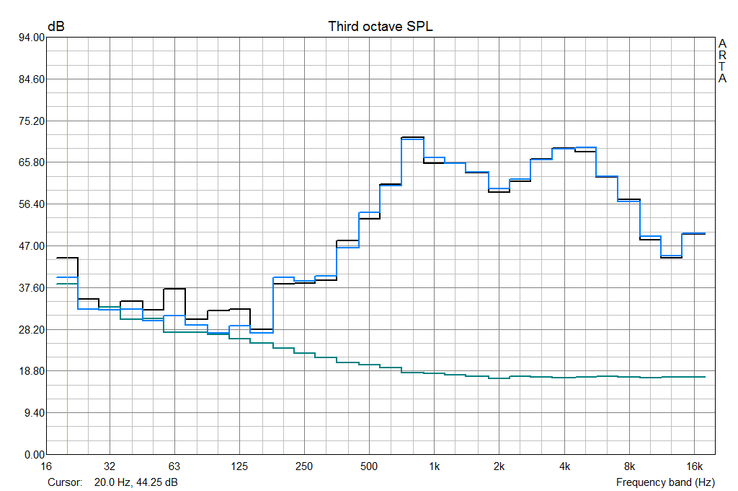
Energy Management
Power Consumption
The device's power consumption in a shutdown state or during standby is exemplary. The idle power consumption also stays within limits and is on par with Chuwi's little Vi8 Plus despite the bigger screen. The power supply even drained a bit less energy during load.
An interesting detail: We did not ascertain any significant changes in power consumption when altering the brightness (using the included power supply).
| Off / Standby | |
| Idle | |
| Load |
|
Battery Runtime
The determined battery life of almost 7 hours in Wi-Fi browsing at 150 cd/m² is quite handy, but slightly below the average of all tablets we have tested (8 h). It comes close to the average when looking at the convertible category (7 h). The Surface 3, for example, only lasted 8% longer in our test.
| Battery Runtime - WiFi Websurfing | |
| Apple iPad Pro 12.9 | |
| Microsoft Surface Pro 4, Core m3 | |
| Microsoft Surface 3 | |
| Chuwi Hi12 | |
| Chuwi Vi8 Plus (CWI519) | |
Pros
Cons
Verdict
Chuwi's Hi12 was very compelling in our test. The high-quality screen's handling was particularly appealing to us. Unfortunately, it dims considerably in battery mode, making outdoor use in sunlight difficult.
The modern Atom processor is relatively fast thanks to the unusual 4 GB of RAM. It, however, struggles with the screen's high resolution. The performance is nevertheless enough for undemanding applications (see our video above).
The poor screening of the audio jack (static noise) as well as the power-in (measurable brightness fluctuations in AC mode) is noticed unfavorably.
Despite the relatively low weight of 825 grams (~1.8 lb), the big dimensions of the device make it somewhat awkward to use as a tablet. It would only really make sense with a detachable keyboard that we still have to wait for. Only then would it be competition for the Microsoft's Surface 3.
Chuwi's Hi12 is presently available for 231.60 Euros (~$259) including shipping at Gearbest.
Chuwi Hi12
-
03/21/2016 v5(old)
Klaus Hinum


 Deutsch
Deutsch English
English Español
Español Français
Français Italiano
Italiano Nederlands
Nederlands Polski
Polski Português
Português Русский
Русский Türkçe
Türkçe Svenska
Svenska Chinese
Chinese Magyar
Magyar